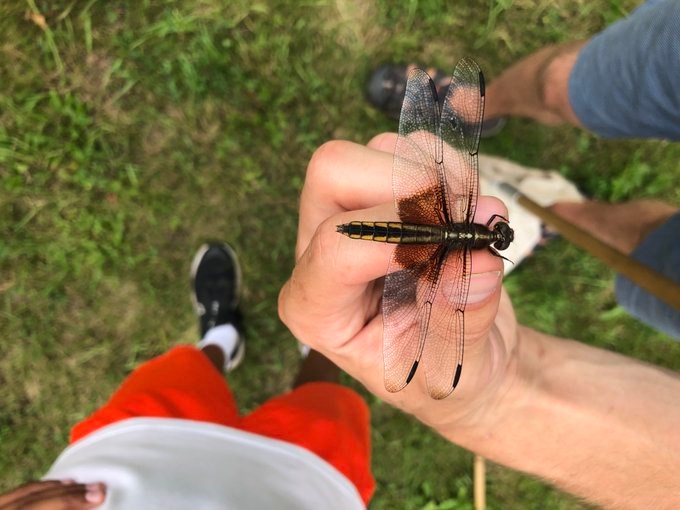From the rarest butterfly to the most common backyard weed, everyone can contribute to biodiversity science.
Recently, the University of Guelph Arboretum iNaturalist project reached 10,000 observations, a milestone that Chris Earley, interpretive biologist and education coordinator at the Guelph Arboretum, says shows people are interested in biodiversity and in figuring out what can be found in the natural world around them.
“We have all of these records of species that we may otherwise not have known about at the arboretum, Earley said.
“This shows that anyone can be a citizen scientist.”
The University of Guelph Biodiversity Inventory is a student-led initiative focused on exploring local biological diversity.
Through community science, people can contribute to the inventory by submitting their sightings with photographs of plants and animals at the UofG Biodiversity iNaturalist project or the Google form.
Earley says the 10,000th observation is especially exciting because it was submitted during a kid's nature camp.
“We were doing a one weekday camp with Gryph’s nature camp, where kids spend the whole day in the arboretum with our naturalists. One of the programs was about insect flight and catching a whole bunch of different flying insects,” Earley said.
"One of the naturalists took a picture and posted it on iNaturalist. It was of a widow skimmer which is a type of dragonfly. And that was our 10,000th observation.”
By using iNaturalist, a social network for sharing biodiversity information to help people learn about nature, observations are documented and tracked through the University of Guelph Biodiversity iNaturalist Project page.
Of the 10,000 observations, there are about 2369 unique species uploaded from over 730 observers.
The initiative aims to gather information on campus at the U of G Sustainability Office to use for education and outreach purposes.
For those submitting observations, Earley says it can be a great way to connect with nature, learn new species identifications, and build a community of other community citizen scientists.
“All of the species found here, are just from people walking through and taking pictures of things and posting them onto iNaturalist,” Earley said.
“Anyone who has a phone, can take a picture as they walk through the arboretum. If they see something that is interesting, they can take a picture of it and submit it on the app.”
And, Earley says, anyone at any age can take part.
“This is a great learning opportunity for everyone, from kids to adults. From the iNaturalist website, you can choose a community and pick projects, search the arboretum, and it lists the top observers, and how many species have been found.”
The most observed species at the arboretum currently, is a garter snake, followed by a Black- Capped Chickadee, the Green Frog, the Western Honey Bee and the North American Porcupine.
"Of course, the number one benefit of something like this is being out in nature,” Earley said.
"You might end up spending more time thinking about the organism that you are looking at. And the more that that happens, the more connected you will be to nature,” Earley said.
Earley says the data submitted becomes an educational tool and a resource for further study.
“Citizen science is a valid scientific endeavour that can be used for all kinds of different projects such as policies for endangered species or letting people know what a specific park’s biodiversity is,” Earley said.
“And this is something you don’t have to do, just in the arboretum. You can do it anywhere. You can do it in your backyard, at the park down the street, or at the cottage for the long weekend. It’s a really fun way of getting people connected to nature.”



